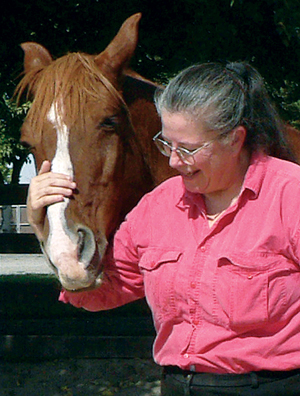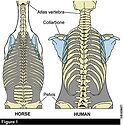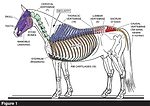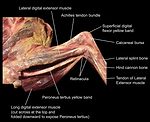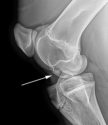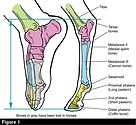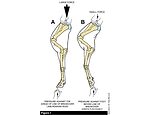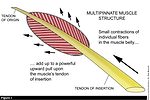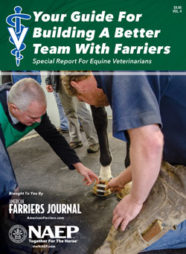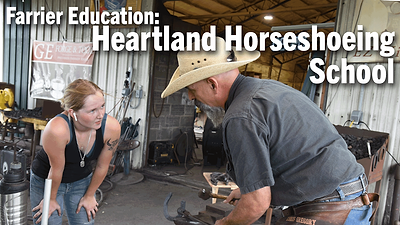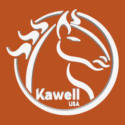Advertise Follow Us
Deb Bennett
Dr. Deb Bennett has studied classification, evolution, anatomy and biomechanics of the horse. She worked at the Smithsonian Institution, until founding the Equine Studies Institute. She is an author who has published four books on horse-related topics, in addition to articles in most major equine magazines in North America.
ARTICLES
Anatomy
Identifying uneven gaits is integral for effective hoof care
Read More
How Leaning Affects Equine Anatomy
The lack of a collarbone influences the form and function of the hoof
Read More
Anatomy
How Straightness Affects the Equine Hoof
Crooked horses can lead to a multitude of hoof, movement and lameness problems
Read More
How the Horse Exchanges Energy in its Hind Limb
Making the connections between the spine, stifle and hooves
Read More
The Critical Importance of the Horse’s Stifle and Hock in Movement
The hind limb reciprocating system coordinates motion and economizes the required effort
Read More
Horse’s Stifle Anatomy Integral for Rest and Snoozing While Standing
Hook-and-loop system allows equids to lock and unlock hind legs
Read More
Hock Provides the Horse Thrust Under Immense Strain
The peculiarly structured joint plays a critical role for performance and working horses
Read More
Equine Anatomy May Be Best Learned through Art
A farrier’s assessment of conformation may be improved by drawing the horse
Read More
Equine Reciprocating Systems
Hoof Trim has Varied Effects on the Equine Forelimb
Demonstrations and real-life examples challenge farriers to think about their approach to solving foot problems
By Deb Bennett
posted on
December 5, 2020
| Posted in Anatomy, Education, Lamenesses, Shoeing, Therapeutic Shoeing, Trimming
Read More
Equine Reciprocating Systems: Do You Know the Nuts and Bolts of the “Orthopedic Trim?”
Farriers test their knowledge about how the forelimb functions
By Deb Bennett
posted on
July 4, 2020
Read More
Top Articles
Current Issue
American Farriers Journal
American Farriers Journal is the “hands-on” magazine for professional farriers, equine veterinarians and horse care product and service buyers.
Tips for Managing the Barefoot Horse in Winter
Easing Breakover & Research Clash
Prepare Your Clients for the Ups & Downs of Laminitis
Current Issue
Special Report For Equine Veterinarians
American Farriers Journal is the “hands-on” magazine for professional farriers, equine veterinarians and horse care product and service buyers.
Must Read Free Eguides
Download these helpful knowledge building tools
- Caring for Your Horse During a Pandemic
- CBD Products Have Promise for Farriers, but Buyer Beware
- Sharpening Knives with a Buffer
- Winter Hoof Care
Videos
Farrier Education: Heartland Horseshoeing School
Farriery requires knowledge and skills to provide proper equine hoof care. In this series, sponsored by VICTORY, American Farriers Journal visits Heartland Horseshoeing School in Lamar, Mo. In this edition, Chris Gregory discussed his journey to becoming an educator, his focus in teaching farrier students and the state of farrier education.
Events
EMS (IR) and PPID: Diagnosis and Management (Part 1) Webinar
Date: 02/26/24
Location:
View Event
Top Directory Listings
Life Data Labs Inc
Life Data Labs Inc. is a dedicated product manufacturer committed to producing premium quality animal nutrition and health products through continuous product improvement and new product development. First-class ingredients, fresh products, consistent high quality and scientifically proven effectiveness are the principal features of Life Data Labs animal health products. And that's why they've produced the #1 recommended hoof supplement by farriers for 12 consecutive years.
Kawell USA
Kawell develops and produces copper alloy horseshoes and inserts, giving horses the care that they need to fight issues associated with white line disease, seedy toe and thrush.
SmartPak
From the feed room to the tack room, SmartPak offers innovative solutions to help riders take great care of their horses. SmartPak was founded in 1999 with the introduction of the patented SmartPak™ supplement feeding system. The revolutionary, daily dose SmartPaks are custom-made for your horse, individually labeled and sealed for freshness.

